Optical Spelunking
 [Image: The CAVE at the Desert Research Institute in Reno, now called the CAVCaM].
[Image: The CAVE at the Desert Research Institute in Reno, now called the CAVCaM].I mentioned a week or two ago that I had been out to Reno, Nevada, visiting, among other things, the Desert Research Institute, where Nicola Twilley of Edible Geography, Mark Smout of Smout Allen, and I began a roadtrip down to Los Angeles, through San Francisco—less a city than a peninsular amphitheater of conflicting microclimates—by way of the Virtual Reality CAVE that you see pictured here.
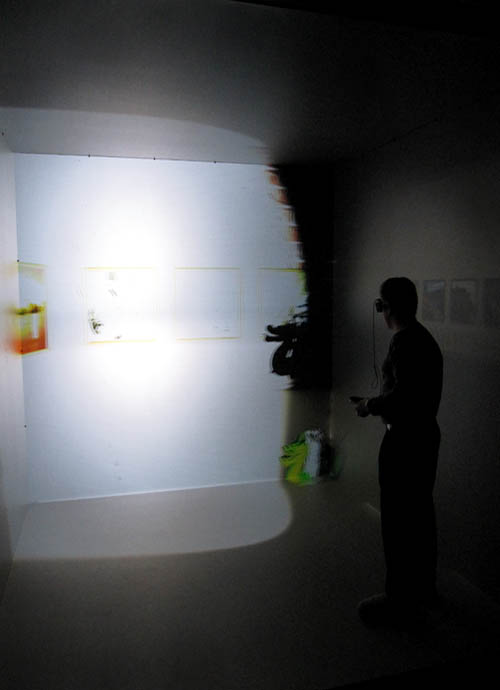
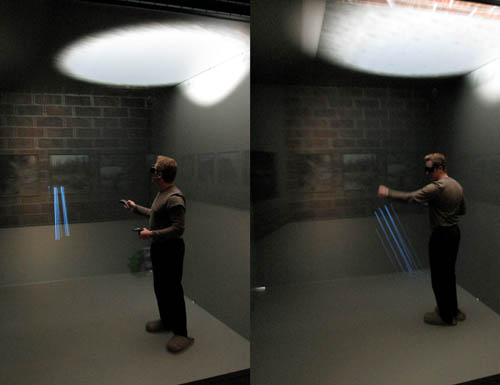 [Image: Daniel Coming, Principle Investigator of the CAVCaM, manipulates geometries that don't exist, and we photograph him as he does so].
[Image: Daniel Coming, Principle Investigator of the CAVCaM, manipulates geometries that don't exist, and we photograph him as he does so].The facility is no longer called the CAVE, I should add; it's now the CAVCaM, or Center for Advanced Visualization, Computation and Modeling. CAVCaM "strives to maintain a state-of-the-art visualization system, improve data collections, simulations, and analyses of scientific information from the environment."
- Advancements will create new capabilities for multidisciplinary research, produce top tier visualization environments for use by the broader scientific community, and offer opportunities to improve management decisions including prediction, planning, mitigation, and public education throughout Nevada and the world.
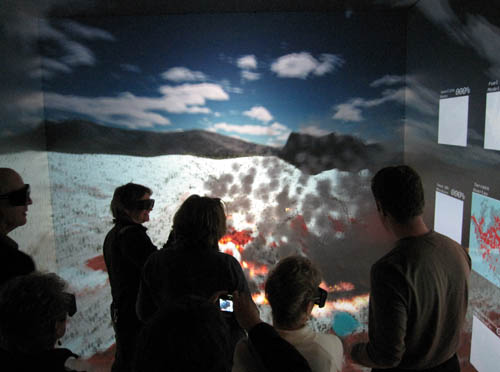 [Image: Touring virtual light].
[Image: Touring virtual light].In most of the photos here you see Matthew Coolidge from the Center for Land Use Interpretation, Bill Gilbert from the Land Arts of the American West program, and activist landscape historian and theorist Lucy Lippard all trying their hands at setting virtual forest fires, chasing digital terrains off cliffs, and navigating a world of overlapping proximities that sewed together around us like high-end neurological garmentry—a perfectly tailored world of pharaonic nonexistence, standing in tombs of imagery and light—to become almost seamlessly 3D. Glimpsing, in advance, possible afterlives of the optic nerve.
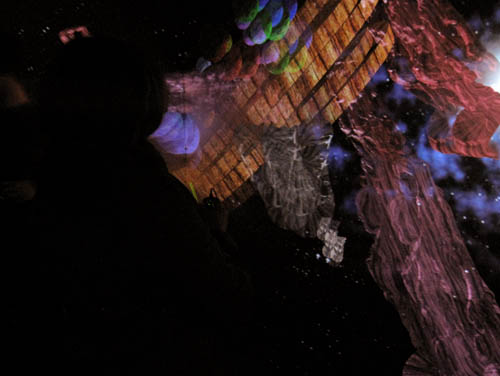
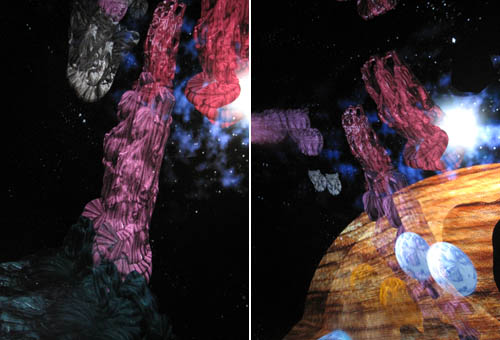 [Image: Cthulhoid satellites appear in space before you, rotating three-dimensionally in silence].
[Image: Cthulhoid satellites appear in space before you, rotating three-dimensionally in silence].Of course, these photos also show the inteprid Dr. Daniel Coming, "Principle Investigator" of the CAVCaM—a fantastic job title, implying that this strange machinic environment that the DRI has built isn't so much put to use, in a dry, straight-forward, functional way, but investigated, researched, explored. Daniel showed us all how to use the hand controls, putting on a display of virtual light and shadows. Objects that were never built, reflecting light that isn't real.
We were all there on an invitation from the staff of the Nevada Museum of Art—who don't appear in these photographs, but were absolutely key in making this tour happen.
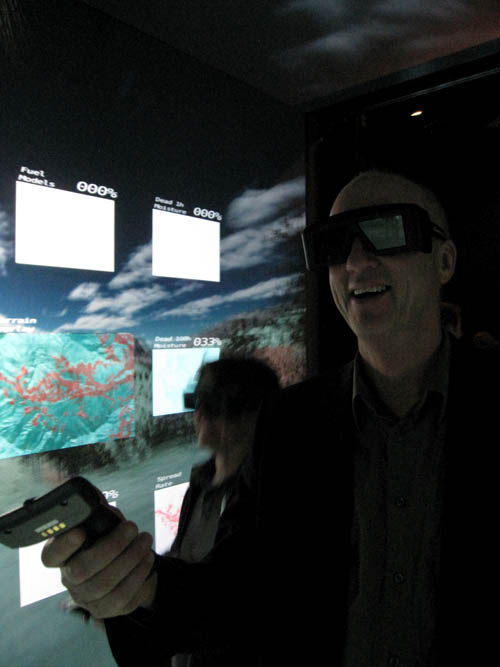
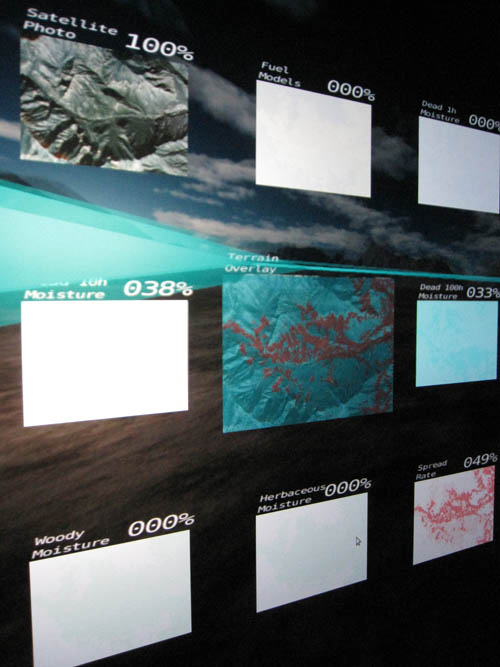
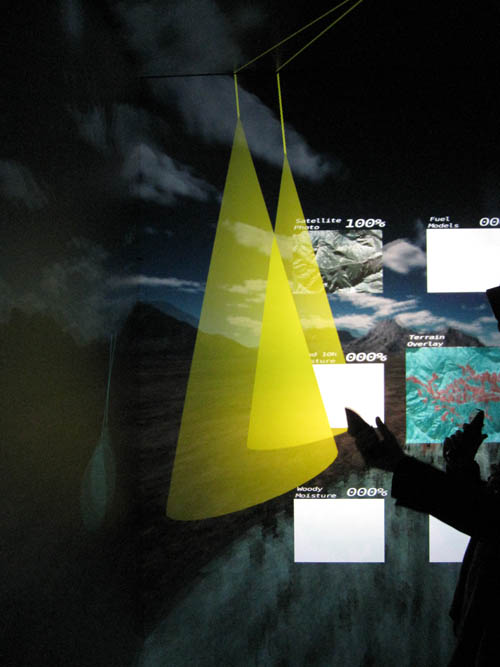
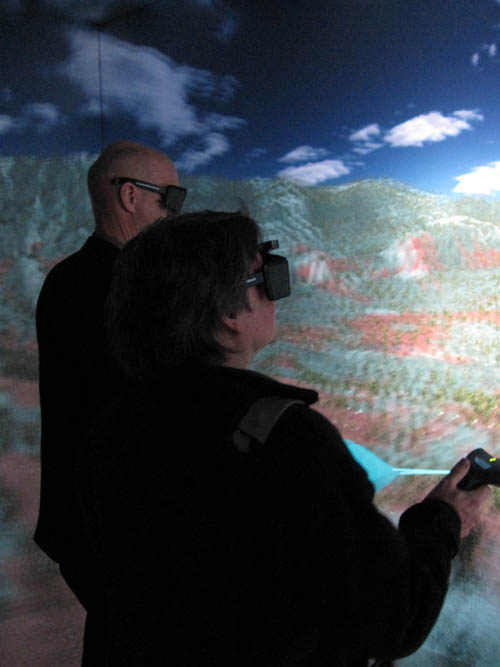
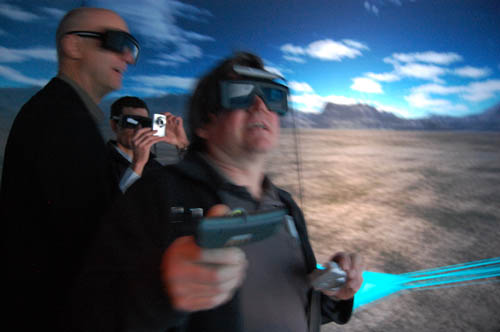
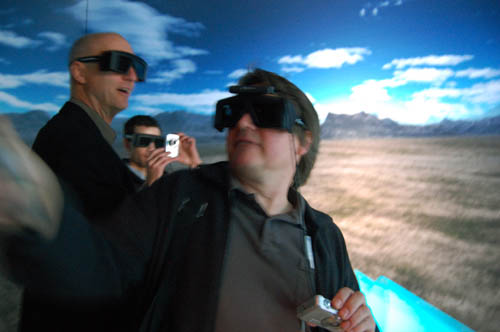
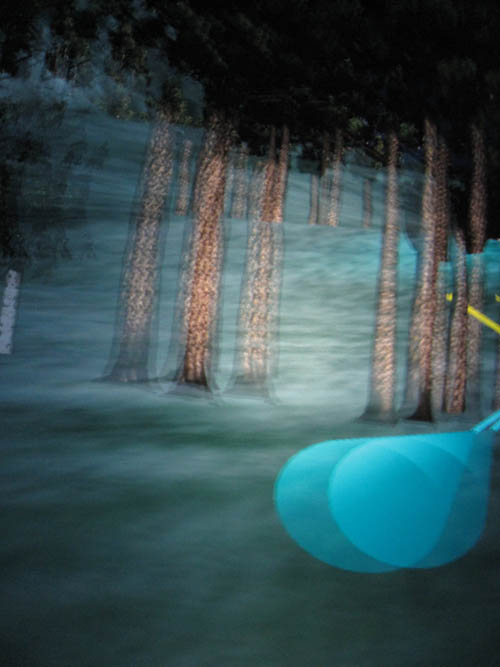
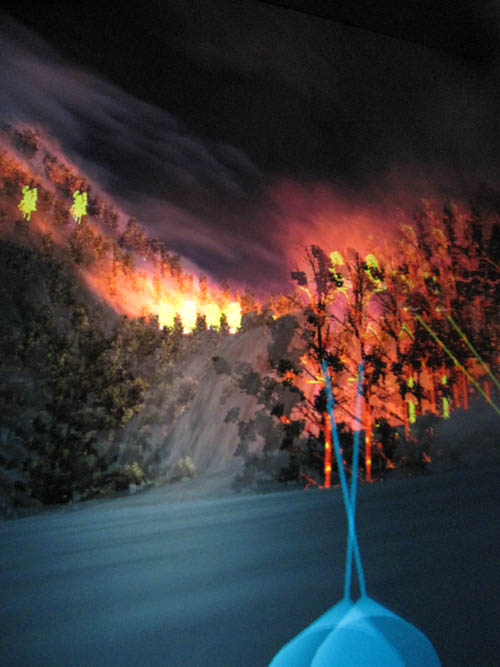
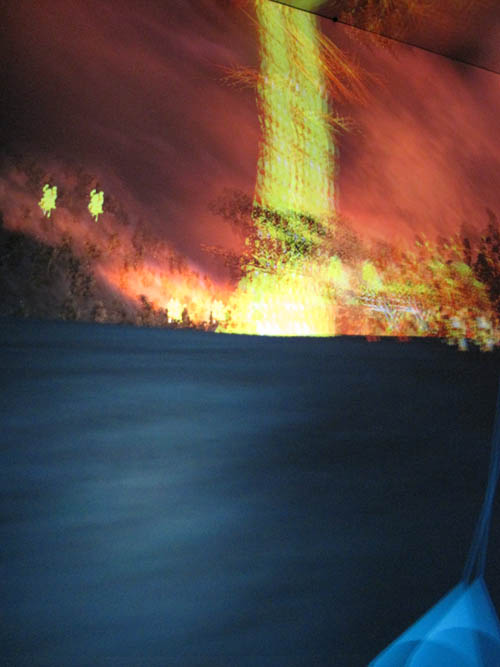
 [Images: Photos by BLDGBLOG and Nicola Twilley].
[Images: Photos by BLDGBLOG and Nicola Twilley].For whatever reason, meanwhile, that last photograph, above, featuring Matthew Coolidge, Bill Gilbert, and Lucy Lippard seemingly entranced—as we all were—by this new altarpiece of virtual surfaces, reminds me of the final lines from R.S. Thomas's old poem "Once":
- Confederates of the natural day,
We went forth to meet the Machine.
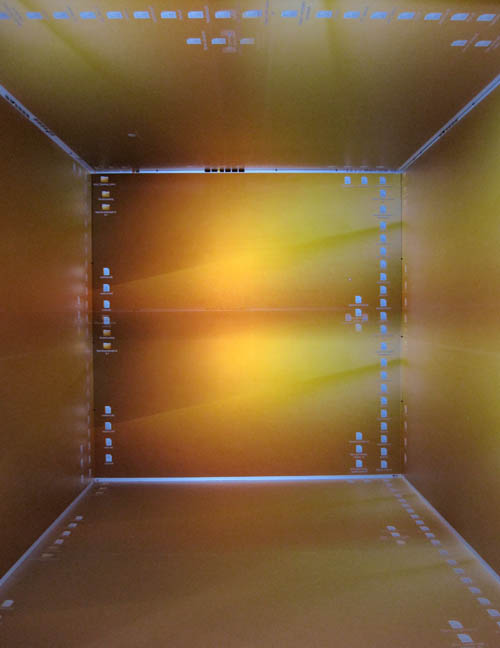 [Image: The CAVCaM reboots after a universe of simulation].
[Image: The CAVCaM reboots after a universe of simulation].





Comments are moderated.
If it's not spam, it will appear here shortly!
new altarpiece of virtual surfaces
Actually, CAVEs have been around for nearly 2 decades. The first one had its first demonstration in 1992.
Sure, anonymous, but altarpieces and temples have been around for at least 12,000 years. I think "nearly 2 decades" still qualifies as pretty new.
Interesting, that is an Ubuntu (a version of Linux) installation. Shows the power that easy access to the graphics driver layer gives a developer.
That last shot look like Linux alright, more power to the penguin eh !
Post a Comment